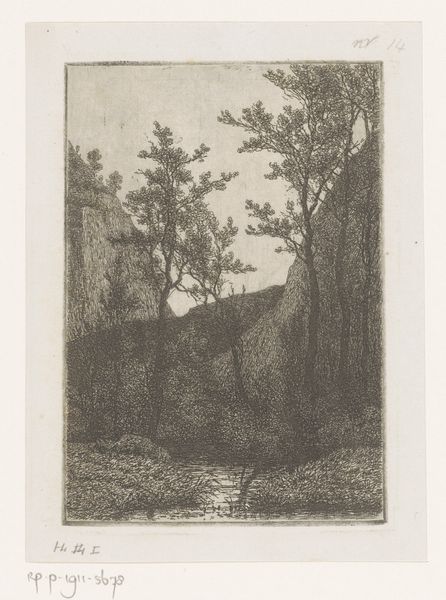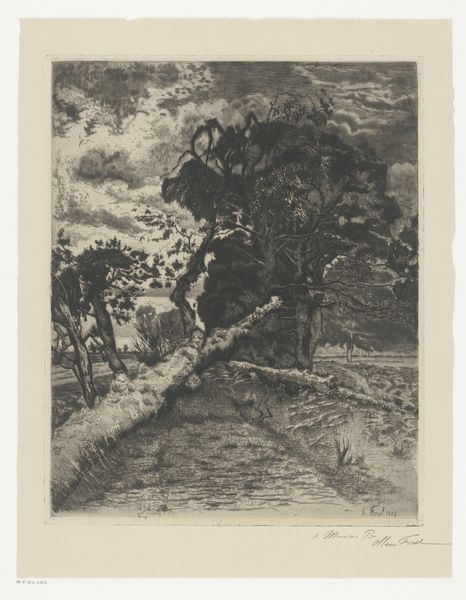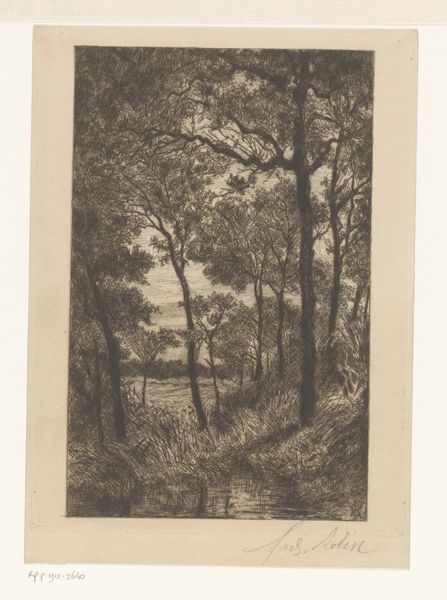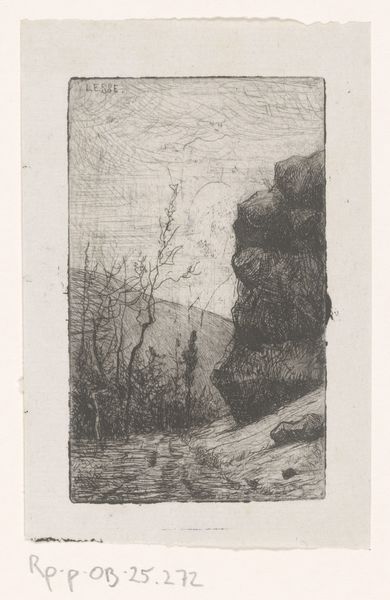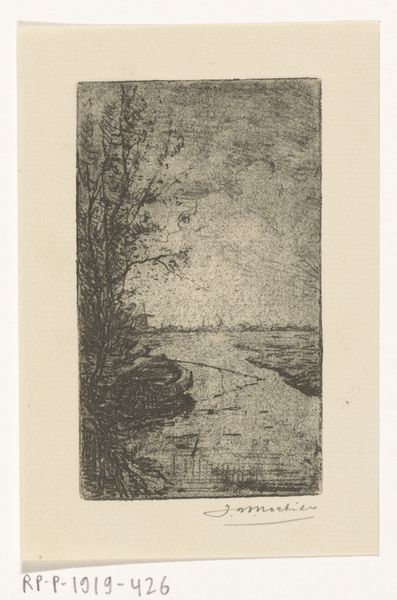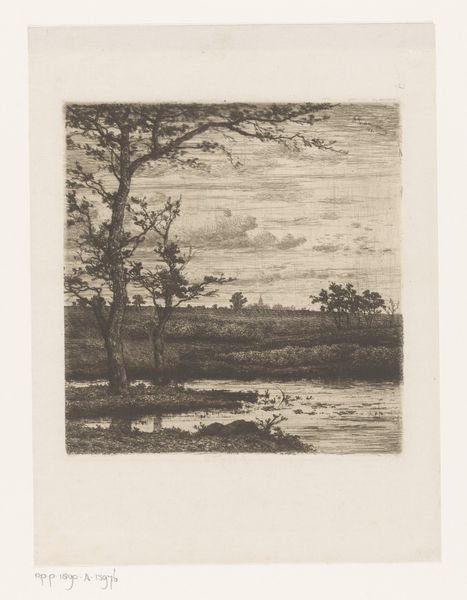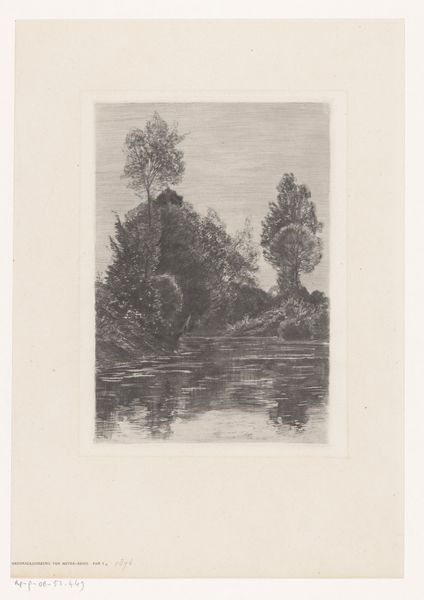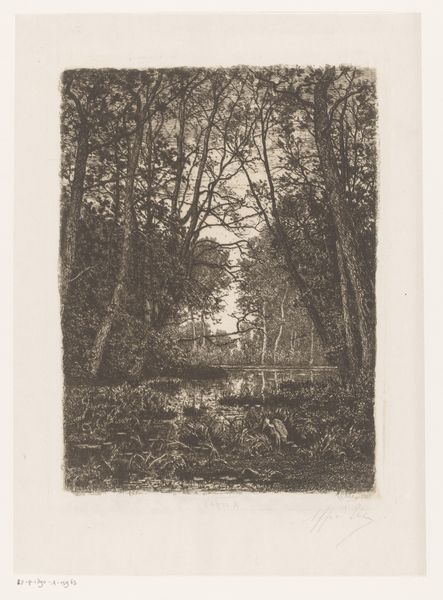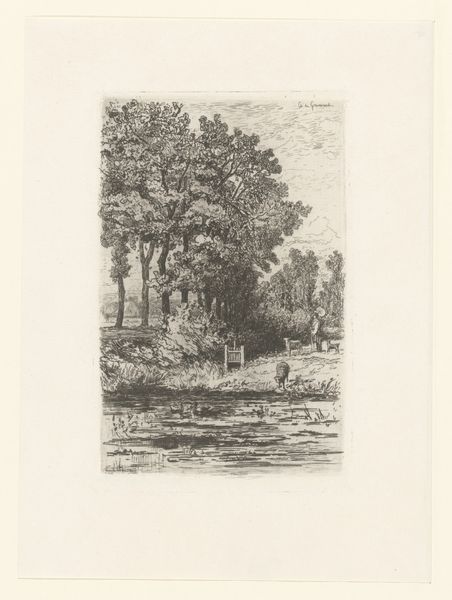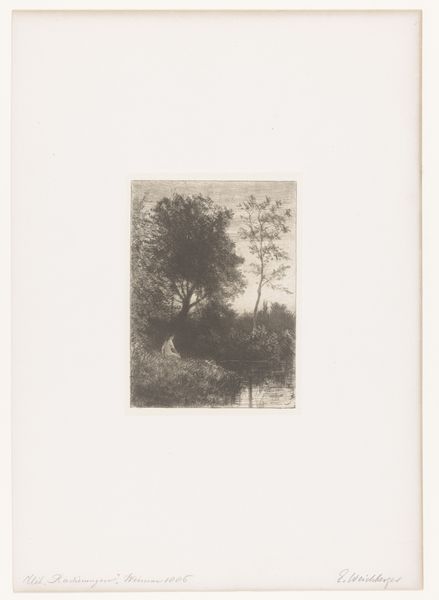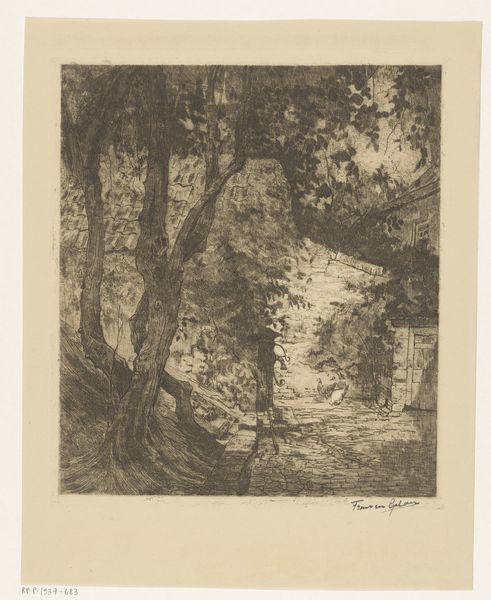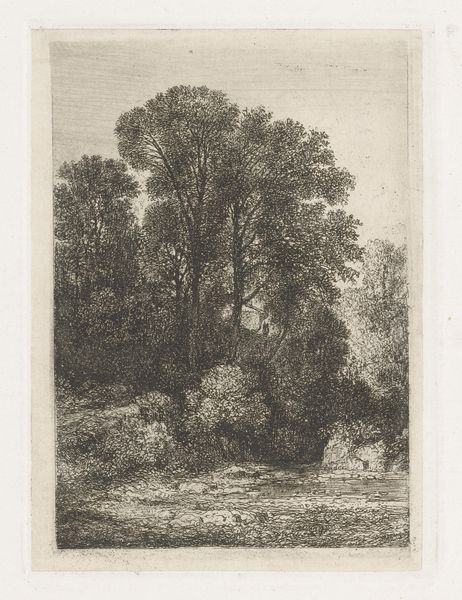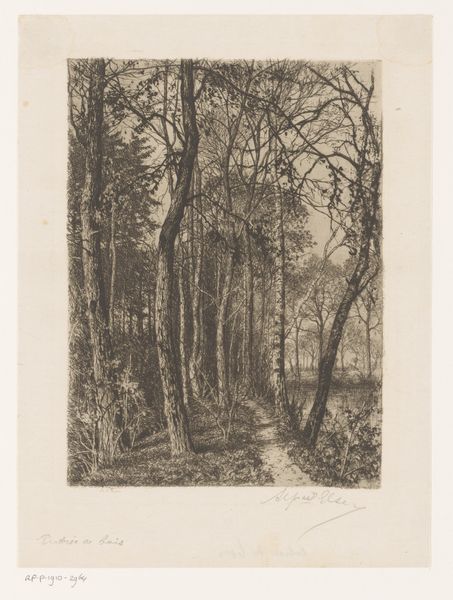
Dimensions: height 151 mm, width 103 mm
Copyright: Rijks Museum: Open Domain
Curator: Look at this intriguing work, "Berglandschap bij Hastière," or "Mountain Landscape near Hastière," crafted by Jean Pierre François Lamorinière. It's an etching on paper, dating sometime between 1838 and 1911. Editor: My first thought is how textured everything seems. You can almost feel the roughness of the stone and the dense foliage; even the sky feels heavy. It’s so detailed for an etching. Curator: Absolutely, that texture comes from the etching process itself. Lamorinière, through the application of acid to the metal plate, created an incredible range of tones and granular effects. Consider, too, the implications of creating landscape in the context of Romanticism—nature not simply as setting, but as something powerful and sublime. Editor: Yes, and landscape prints were so important for circulating ideas about national identity and natural resources at the time. Did images like this contribute to a romanticized or even idealized understanding of these areas, potentially influencing their economic or social development? I wonder about the impact that depictions like this one, and the printmaking process used to produce them, had on shaping our contemporary view of our landscapes. Curator: That’s a fascinating question. It brings to mind the accessibility of prints – multiple impressions allowing broader circulation, but also impacting the value and perception of the image itself. The labor involved is less about individual artistic genius and more about skilled reproduction and distribution. The scale is significant; it feels intimate and accessible due to it being on paper and made as a print rather than a large-scale painting Editor: And those dark lines around the trees give definition against that brighter sky—you can tell this was done in several stages and I'd wonder about the state of the plates in other versions and proofs. It has an appealing somberness to it, and knowing its wider distribution through print is actually intriguing. Curator: It’s an evocative landscape—quiet, contemplative, and carefully constructed through labor intensive means, showing nature altered through materiality. Editor: Exactly! It reveals an interaction between artist and landscape, and offers insights on both social and individual levels of art consumption. A fine reflection of an interesting era.
Comments
No comments
Be the first to comment and join the conversation on the ultimate creative platform.
